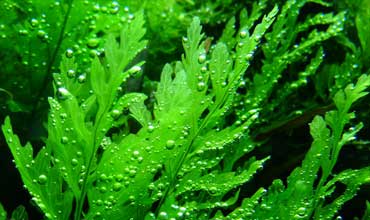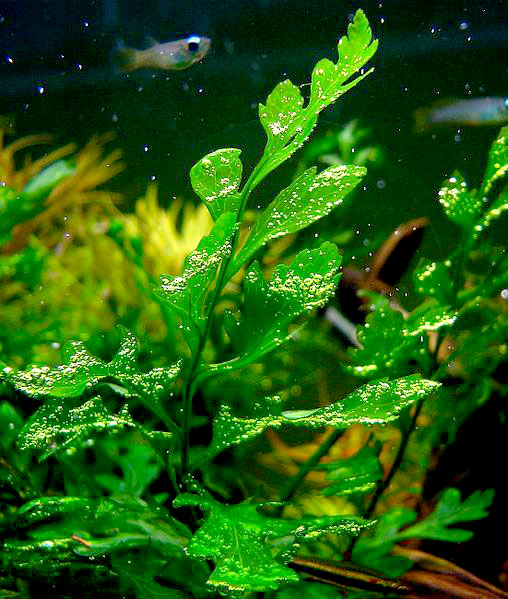African Water Fern
The African Water Fern, Bolbitis Heudelotii, is a hardy and robust aquatic fern typically found in the bogs and streams of Africa. It is also sometimes called the Congo Fern as it can be found along the Congo River Basin. The fern does best when attached to pieces of wood or lava rocks in water moving areas. It has dark green leaves, which when delicately cut, allow it to grow slowly.
- Care Level: Easy
- Lighting: Low
- Placement: Midground to Background
- Maximum Size: 22″
- Water Conditions: 74-84° F, pH 6.0-8.5, KH 5-15
- Propagation: Rhizome Division
- Coloration: Green
- Supplements: Iron, Potassium, Trace Elements, Substrate Fertilizer
- Origin: Africa
Table of Contents
Introduction
Growth and Care
Propagation
Compatability
While it can take up to two months for just one leaf to grow, the African Water Fern is able to reach heights of up to 22 inches and widths of up to 8 inches. How well it grows depends on the living conditions. Most important to the plant are nutrients, light, and CO2 levels.
Growth and Care
The plant grows slowly, but it is relatively easy to take care of. It should be attached to a substrate rich in nutrients and given weekly fertilizations – unless the fish in the tank are producing enough waste to maintain it. The growth of the plant can be enhanced with CO2 supplements, especially after the tank is established.
The fern needs strong lighting to survive. You’re looking at at least 3 watts per gallon. Be wary about algae as it can compete with the fern for food and stop the plant from getting adequate amounts of light.
Get rid of the algae by cleaning it or putting some fish that eat algae to eat it up. The fern can survive on lower light levels, but it can stop growing entirely without proper lighting. The Bolbitis should be kept in an area of the tank with medium water movement or currents. It doesn’t do well with salt, so only grow it in a freshwater tank.
Ensure that you clip off any unhealthy or dead leaves and sections so that the plant focuses its energy on healthy areas. Dead plant matter also spoils the water and causes health problems for the tank at large. So it’s worth doing this for the sake of your fish too.
Propagation
Propagation of the African Water Fern can be assisted by using a razor blade or sharp pair of scissors to divide the rhizome. Attach the clipping where you want it to grow, creating a contrast with the older plants. Younger plants are typically a brighter green than older, darker, green-green colored plants.
Ensure that you clip off any unhealthy or dead leaves and sections so that the plant focuses its energy on healthy areas. Dead plant matter also spoils the water and causes health problems for the tank at large. So it’s worth doing this for the sake of your fish too.
Compatibility
If you’re thinking about introducing a fish that eats algae to keep the fern clean, then don’t use the Pleco. The Pleco will eat the plant as well as the algae. A better choice is shrimp or Otocinclus.
Other fish that shouldn’t be kept in a tank with the fern are koi and goldfish, along with cichlids. The exceptions to this are Kribenis and rams. Other fish to keep out of the tank are tinfoil barbs and silver dollars, as they are likely to eat it.
As long as the aquarium is filled with suitable fish that aren’t likely to graze on it, the wide leaves of the fern offer a lot of hiding space for small fish that try to hide from other fish harassing them or just want a little privacy.
Given how much time and effort it takes to grow the fern properly, it is only recommended for experts. It can also be difficult to find and have an expensive price tag, so it’s little wonder that only the experienced aquarists who love the fern are willing to buy and grow them.



